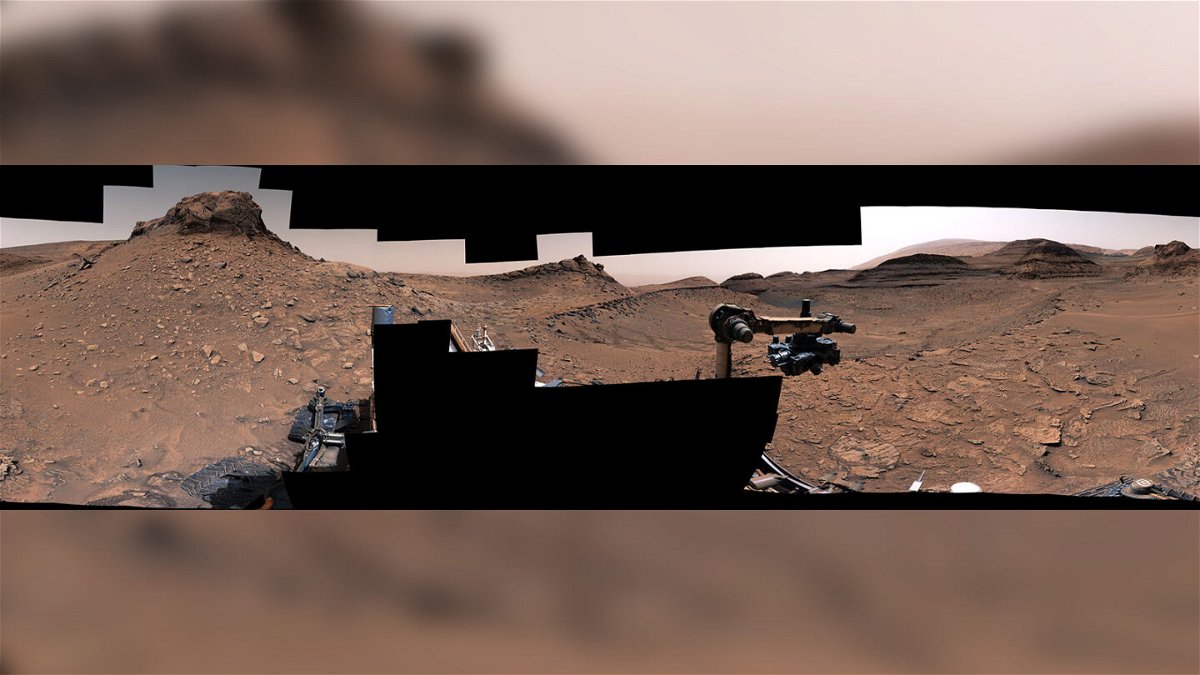NASA rover finds ‘clearest evidence yet’ of an ancient lake on Mars

NASA's Curiosity rover used its Mast Camera to capture this 360-degree panorama of an area on Mars known as Marker Band Valley on December 16
By Jackie Wattles, CNN
In the foothills of a Martian mountain, NASA’s Curiosity rover found stunning new evidence of an ancient lake in the form of rocks etched with the ripples of waves — and the telltale signs appeared in an unlikely place.
The rover is traversing an area of Mars called the “sulfate-bearing unit” that researchers previously thought would only show evidence of mere trickles of water, as scientists believed the rocks there formed as the surface of the red planet was drying out. Instead, the rover found some of the clearest evidence yet of ancient waters.
“This is the best evidence of water and waves that we’ve seen in the entire mission,” said Ashwin Vasavada, Curiosity’s project scientist at NASA’s Jet Propulsion Laboratory in Pasadena, California, in a statement. “We climbed through thousands of feet of lake deposits and never saw evidence like this — and now we found it in a place we expected to be dry.”
The sulfate-bearing unit is a region previously identified by the Mars Reconaissance Orbiter as containing salty mineral deposits just beneath an 18,000-foot (5,500-meter) mountain called Mount Sharp. Scientists consider the sulfate-bearing unit to be a location rife with clues about how and why Mars morphed from a watery planet into the frozen place it is today, and researchers have long sought to explore the area in more depth.
Though the region contains rocks that were thought to have formed “when water was drying to a trickle,” according to NASA, the new images from Curiosity show evidence of a shallow lake.
“Billions of years ago, waves on the surface of a shallow lake stirred up sediment at the lake bottom, over time creating rippled textures left in rock,” according to a NASA news release.
The wave-marked rocks were found about one-half mile (800 meters) into Curiosity’s ascent of Mount Sharp. As the rover climbed higher, it traveled over rocks that would have formed more recently. That’s why researchers didn’t expect to see such clear markers of a large body of water.
Specifically, the rocks were discovered in what’s called the Marker Band Valley, a zigzag formation of rocks that stands out against the landscape, thanks to its darker coloring. The rover began exploring the Marker Band feature — which was found to have thin, hard rocks covering the surface is a scalelike pattern — in 2022.
Curiosity has attempted to extract samples from some of the rocks, but they proved too hard for the rover’s drill, according to NASA. But scientists are hoping the vehicle will stumble on some softer spots more conducive to sample collection as its trek continues.
The Curiosity rover has been exploring the Martian surface for about a decade, and it’s been climbing the base of Mount Sharp since 2014. Scientists are particularly interested in the mountain because its suspected past — in which the landmark was surrounded by streams and lakes — could have been host to microbial life forms. That is, if any ever existed on Mars.
The-CNN-Wire
™ & © 2023 Cable News Network, Inc., a Warner Bros. Discovery Company. All rights reserved.